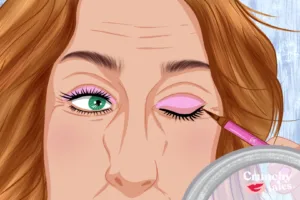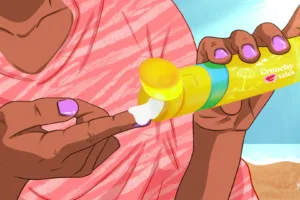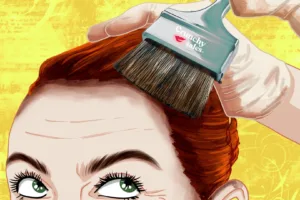Grey Pride: Live And Let Dye Die
Is grey hair having a spotlight moment? On social media, there are plenty of gorgeous silver-haired women who look beautiful, sassy and confident. Well-known figures such as Jamie Lee Curtis, Meryl Streep, Glenn Close and Helen Mirren have helped bright grey locks increase in popularity. Having grey hair is no longer a sign of defeat but rather an accomplishment.
According to what Pinterest has recently reported, there is an 879% increase in searches for “going grey” with a burst in users who are looking for ways to wear their silver hair naturally without relying on expensive colouring treatments and root touch-ups.
As the perception of older women slowly starts to change, it looks like the old image of grey hair does, too. Contributing to the trending positivity towards natural grey was Clairol’s Face your First campaign in October, which has been the first one of its kind to encourage women to make their own decision about whether or not they want to cover up their grey hair or show them off.
What’s behind the choice of growing grey?
According to the National Hairdressers Federation, in the UK we spend £7.2bn a year at the hairdressers and average nearly £90 on a cut and colour. Many women are simply tired of being a slave to the dye, of the long and expensive hair salon appointments and of putting chemicals on their scalps. Other ladies wanted to reclaim their right of turning grey as part of ageing authentically. In the end, colouring their hair is worth it for their own reasons alone, and not because society is pushing them to that choice.
Allowing locks to become their true colour is also a journey in which one discovers their true self. In fact, going grey is a big decision. For most, it’s a visible sign of being past their sell-by date but indeed it’s a symbol of power. The truth is, women get more trustworthy with age, just as men do. “The systematic attempt to deny the symbol of that increased trustworthiness for one gender – wrote Hazel Thompson in Forbes– is just part of the cost we pay as a society for the female youth illusion”.
In 1983, an American TV producer Anne Kreamer found her first grey hair. She was 27. For the next two decades, she dyed her hair about every three weeks (spending an average of $65,000 in total), until she saw a photo of herself in 2004 and realised she was a 49-year-old woman with delusions of youth. The hair dye wasn’t fooling anybody. “Could I end the game of denial and move more honestly into middle age?” she asked herself. The answer is in her bestseller, “Going Gray: What I Learned About Beauty, Sex, Work, Motherhood, Authenticity, and Everything Else That Really Matters” (Little, Brown, $23.99). Kreamer believes that using colouring as an ageing disguise does exactly the opposite: it knocks your confidence down.
It’s your sense of vitality and your character that define you – she said- .You could have the best dye-job from a top salon, but have a slump in your step, and you would look ancient. We’re all fooling ourselves if we think we don’t age and won’t get grey. It’s like wearing a miniskirt over a certain age. You just have to accept the fact that you can go grey and still be fabulous.
Turning silver
But going grey artificially is quite a procedure, involving multiple bleaches, a purple toner, followed by a grey dye: all taking time and money (a little investment, at least for the first few months). In fact, grey hair needs special care to look its best: as the texture changes, hair can become more difficult to manage.
“The first phase, where roots are more prominent, is the messiest – said Lorraine Massey in ‘Silver Hair: A Handbook’ (Workman Publishing)-, but the final stages, as the colour reveals itself, are thrilling. The best way is to work with a professional hair technician to help you manage the transition: such as adding lighter highlights and using a toner to blend in the transition line between the new and the old hair”.
Choosing a hairstyle that’s edgy and contemporary might help. As well as getting anti-frizz products and a new shampoo. “During those moments when you think you might want to throw in the towel, try this: wait just one more day before deciding to dye it back. You may feel differently tomorrow – and then you are already another day closer to uncovering the hair that wants to be discovered: your glorious new colour.”




